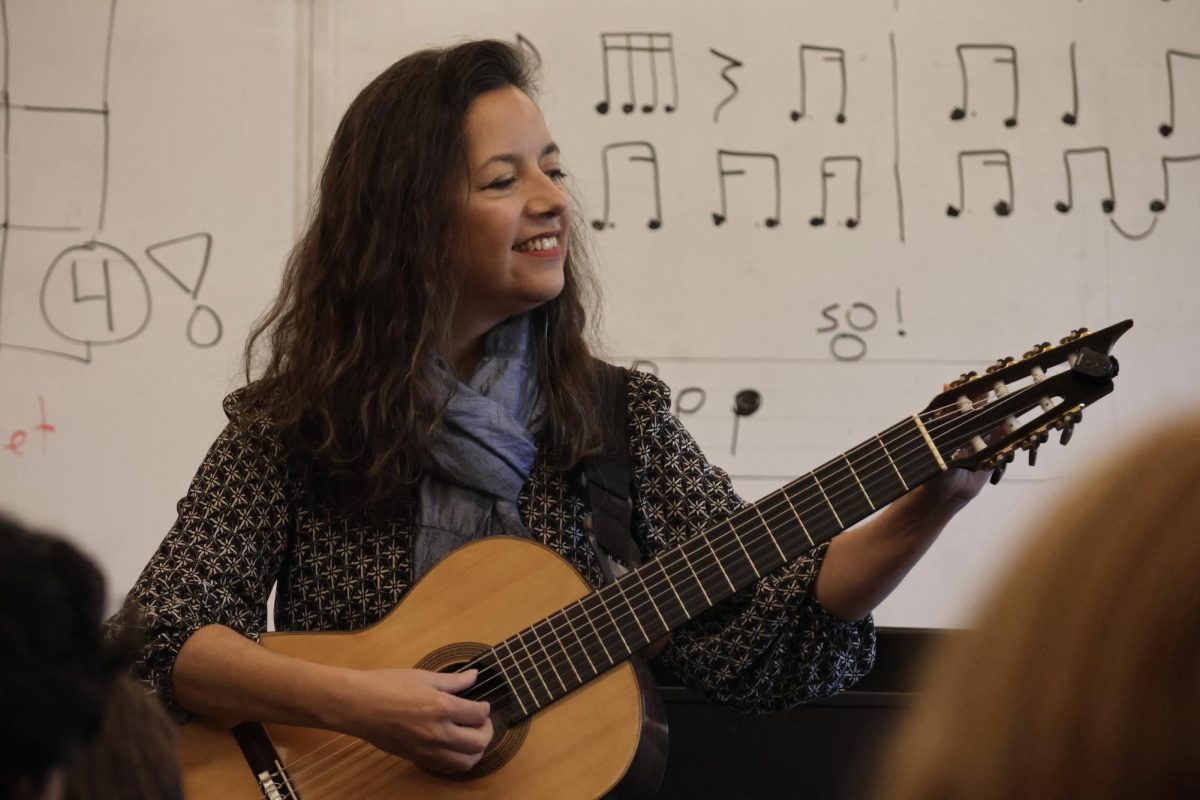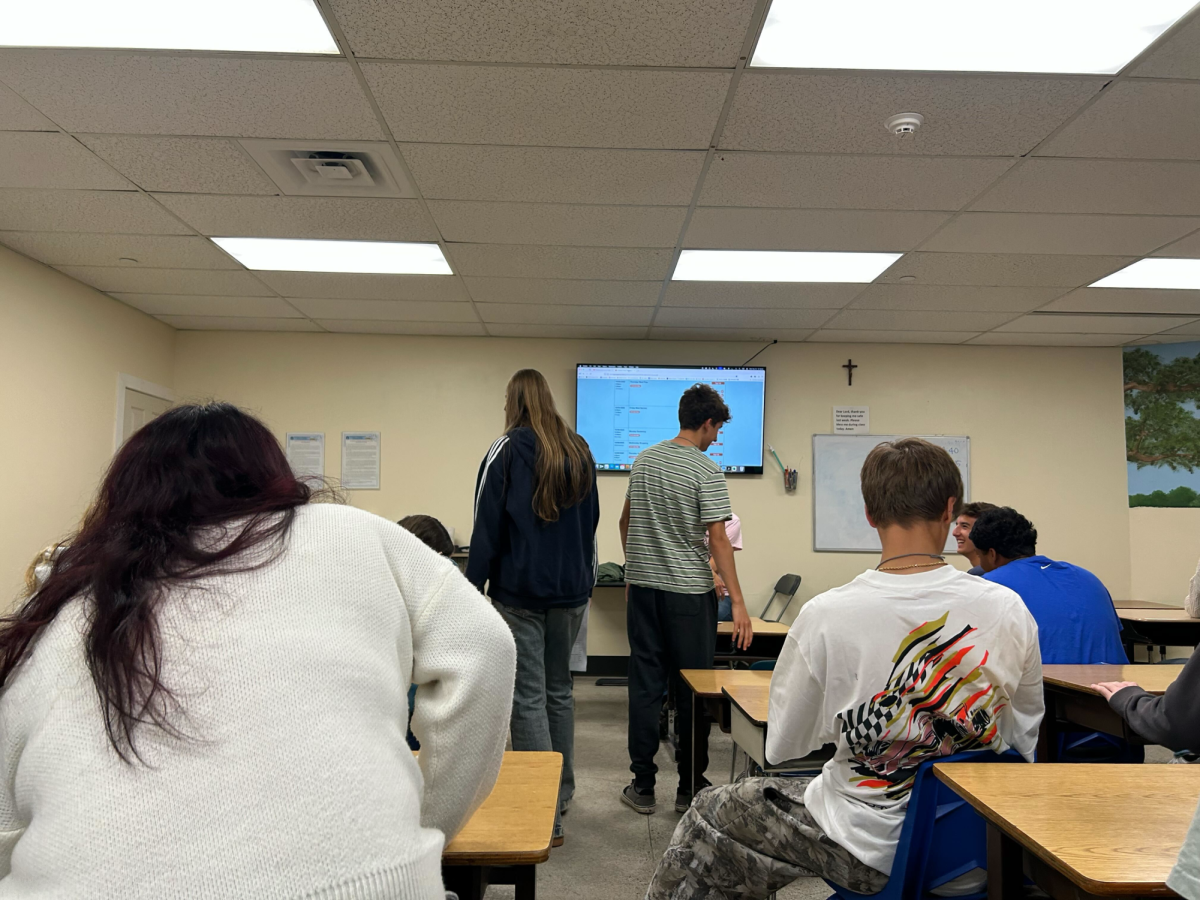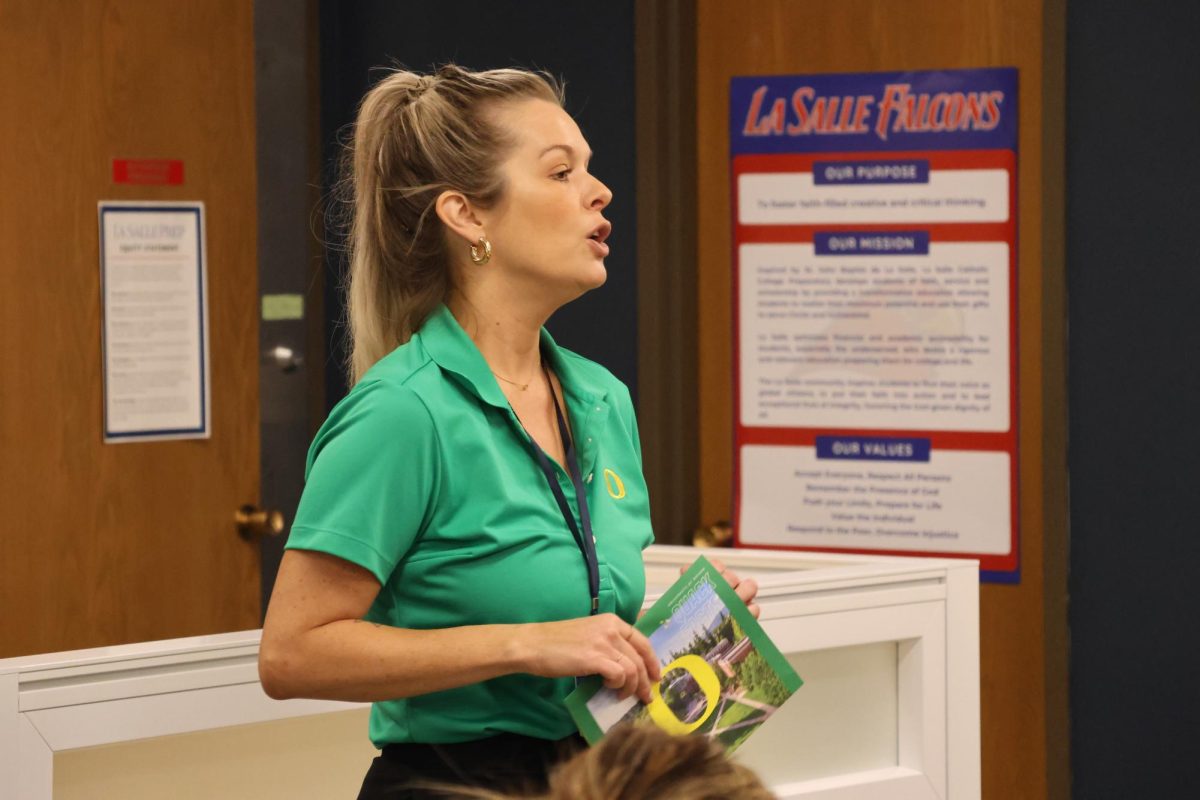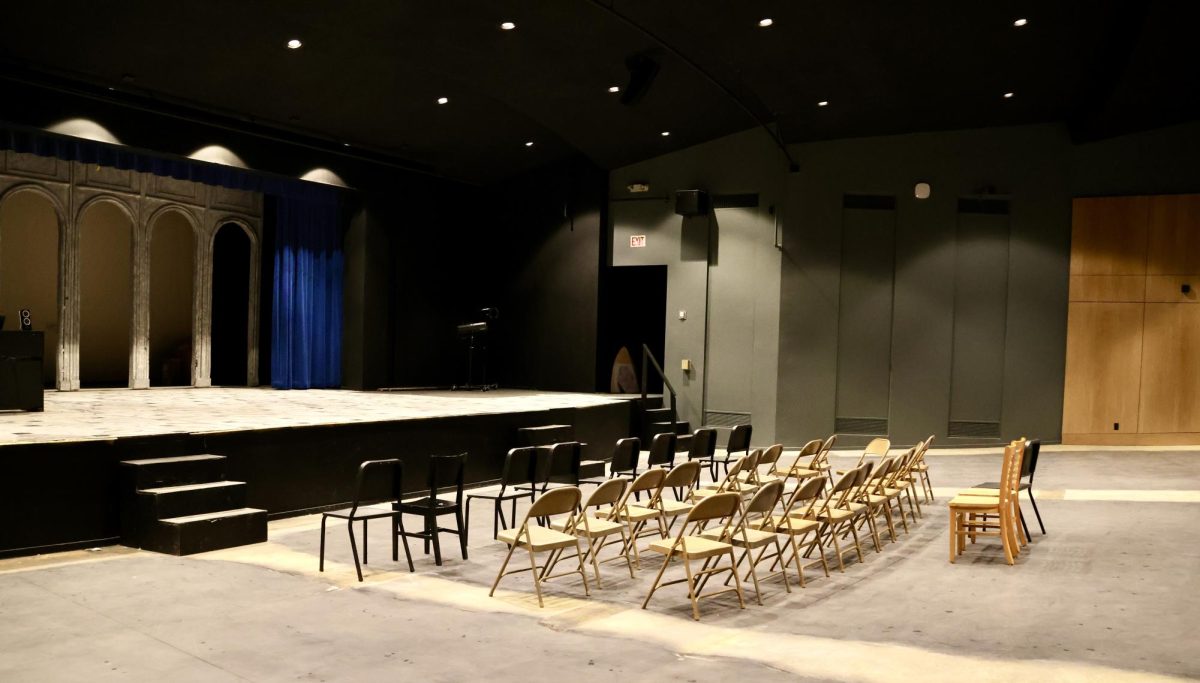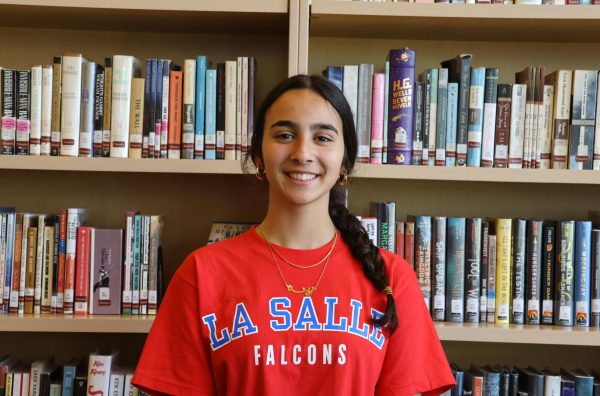Lasallian teachers prepare for lessons in a variety of different ways. From Spanish teacher Ms. Amy Gantt prepping for classes in the summer, to STEAM Director Ms. Carie Coleman preparing on Sundays, here’s a glimpse into the steps teachers take to prepare for classes.
Mr. Ryan Kain
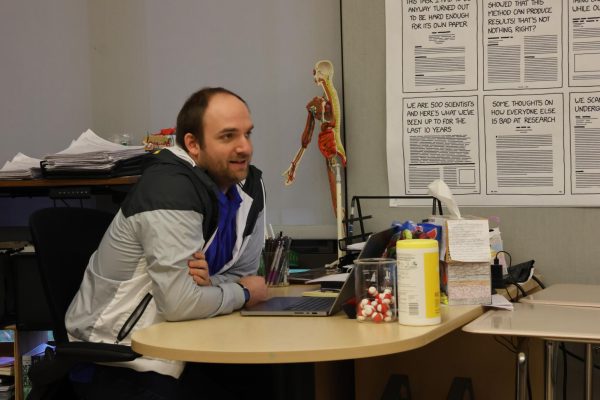
Science teacher Mr. Ryan Kain, who teaches Anatomy & Physiology, Honors Biology, Learning How to Learn, and Marine Biology, usually arrives at school between 7 a.m. and 7:30 a.m. He tries to leave anywhere between 4. p.m. and 5 p.m.
Over the course of his 10 years of teaching, Mr. Kain has adapted to being a morning person, getting most of his work done in the morning since students are almost always in his class after school.
According to Mr. Kain, lesson preparation can consist of starting a whole new lesson plan, recording videos, or putting together activities with basic instructions.
“I’ve taught my anatomy class eight times,” he said. “So, I’ve got a lot of resources that I’m pulling from, a lot of things that I’ve already generated that I’m either just adjusting, tweaking, or figuring out what’s going to need to happen for that class that day.”
Mr. Kain said his Honors Biology class is similar to a certain point. On the other hand, Learning How to Learn is a new class, so preparation is different because he is starting from scratch.
Mr. Kain’s favorite part about teaching is being able to work alongside students who are eager to learn.
“I obviously love biology, I obviously love life science, I love teaching about those things,” he said. “I love working with humans that are excited about learning about those things most of all.”
Ms. Rose Adkisson
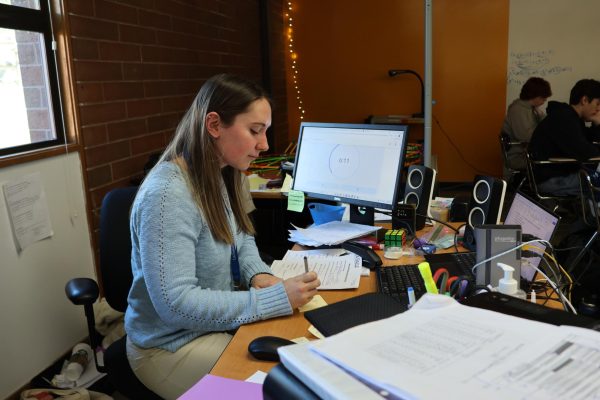
In her first year teaching at La Salle, math teacher Ms. Rose Adkisson has arrived at school around 7:30 a.m. each morning and does most of her lesson planning over the weekend since her classroom is always full with students.
Teaching Geometry, Honors Algebra II, and AP Precalculus, Ms. Adkisson usually has anywhere from two to 15 students in her classroom after school for one or two hours, doing test corrections or asking questions about homework. The exception for this is Mondays, when she teaches an online course for La Salle University in Philadelphia, PA.
Ms. Adkisson usually has a week’s worth of class prepared two to three weeks in advance to avoid stressing more than she needs to.
When preparing, she often checks Schoology to confirm that all of the assignments for the week are posted and ensures her notes for the week are downloaded in Notability. She then creates all her keys and goes through the homework to decide if she should make any changes.
For her Honors Algebra II class, she has up to three units prepared in advance, whereas for AP Precalculus, Ms. Adkisson has almost the whole year laid out. In contrast, her geometry class is only planned out for another month.
“I’m one of those people who likes to plan units and units ahead,” she said.
Ms. Adkisson’s favorite thing about this process is that she is able to make her own decisions about the content and order of the lessons.
“I think doing it in advance and doing it so thoroughly has made it a much deeper process for understanding the material and how I want to present it and giving me the opportunities to really perfect it,” she said.
Ms. Amy Gantt
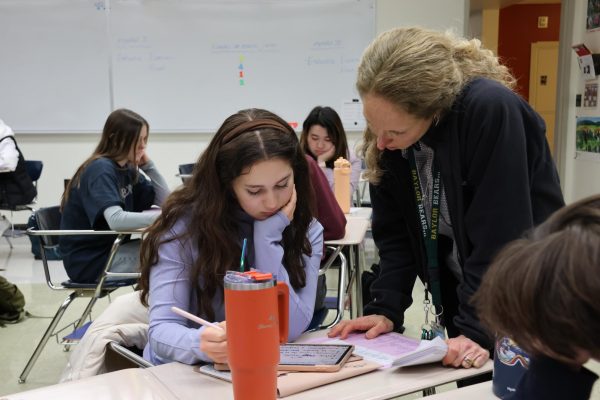
An educator of 26 years, Spanish teacher Ms. Amy Gantt instructs Spanish I and Honors Spanish III.
Arriving at school between 7:15 a.m. and 7:20 a.m., “I am not a person who can just walk in and immediately teach,” Ms. Gantt said. “I have to get here, [and] I have to get everything settled the way that I like it, make sure I have all my materials for the day and ready to go.”
When not teaching a class, Ms. Gantt prepares materials for the following week, grades, makes a few copies, or has a meeting with a counselor or with somebody in the school administration.
She gets ready for lessons and classes in the summer with the expectation that plans might change because of a snow day or getting sick. When developing lesson plans, she considers what worked and didn’t work from the previous years and what she should spend more time on with the class.
Ms. Gantt commonly stays after school until about 4:30 p.m. to ensure everything is organized in the way she wants it for the next day.
“Organization is really important for me in that I have a plan, and I’m able to prepare for that plan, but at the same time, if we need to change and adapt, I can’t be so set in stone,” she said.
Ms. Carie Coleman
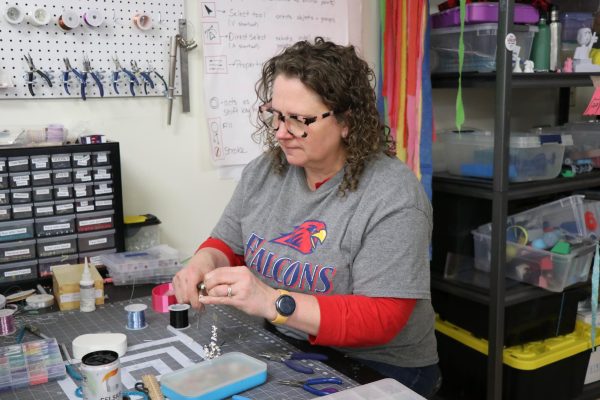
STEAM Director Ms. Carie Coleman — teacher of AP Biology, Intro to Design Thinking and Tools, and Advanced Design Thinking and Tools — has been an educator at La Salle for 25 years.
Between the time Ms. Coleman gets to school at 7:30 a.m. and leaves at 5 p.m., a range of 25 to 35 students are in her classroom hanging out, doing homework, or printing.
Having not taught AP Biology for 12 years, Ms. Coleman usually spends five to six hours on Sunday note-taking, coming up with lessons, notes for slides, and activities just for AP Biology. The rest of her Sunday work hours are spent preparing for her other classes.
Since Ms. Coleman is always busy with students before and after school, she wishes she had more time to grade. When she is at school, she wants to be “present with students because the Makerspace is an important place for a lot of people, and I just want to make sure that they feel that it’s welcoming and homey,” she said. “I want to make sure that when we’re here, students feel seen, and they have a place to be themselves.”
Mr. Peter Snow
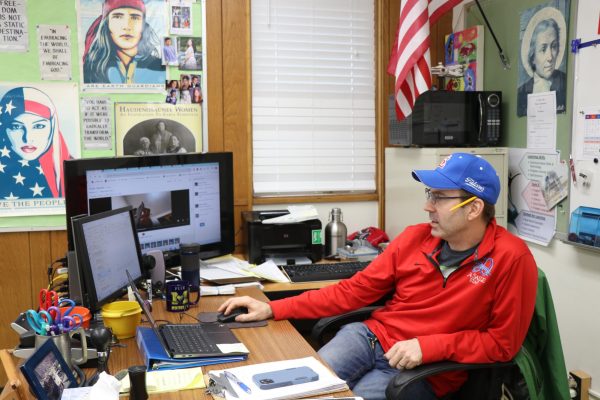
Mr. Peter Snow has been a teacher for 27 years and currently teaches World History II, American Government, and Psychology.
“There’s never a day that’s exactly the same,” Mr. Snow said. “It’s always a little different, but there’s always parts of it that are the same. So, it’s comfortable and you can have great conversations with students, but there’s never the monotony of doing the same thing everyday.”
Getting here at about 7:30 a.m., Mr. Snow starts off his morning by eating breakfast, reading his email, and checking his Schoology messages. He then fills out the section of his board that says daily agenda for his classes.
After that, he starts getting everything ready on the computer — all the files that he needs to have that they are going to be talking about in class, web pages, and videos.
Depending on the day, when Mr. Snow is getting close to the end of a unit, he spends more time planning the next unit and bringing the general idea of it to life. By the end of the week, he focuses on making sure that the next week is all planned out while keeping in mind the scenarios of something happening.
Mr. Snow’s favorite part about planning is “the creativity of it,” he said. “I tend not to teach the same lesson from one semester to the next semester the same.”
Mr. Greg Larson
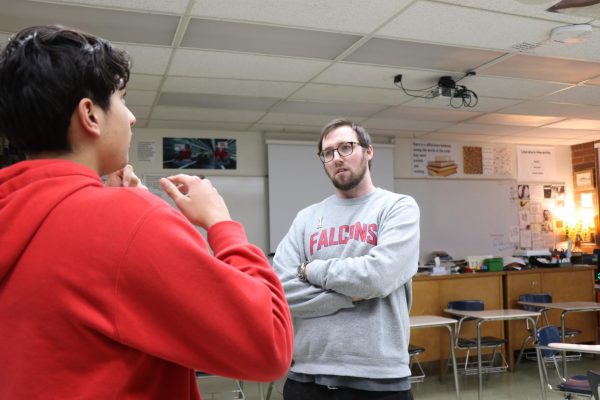
A former La Salle student, Mr. Greg Larson has been teaching for eight years at La Salle.
When teaching English I, Honors English II, and English II, his favorite part is “watching students grow, seeing ideas come alive, helping develop curiosity, listening to students talk to each other about important ideas, [and] learning from my students, ” Mr. Larson said. “There’s a lot of joy in this job.”
Arriving at school at 7:30 a.m. every day, he starts by checking his lesson plans, making copies if needed, figuring out what music to play for students upon their arrival, and answering students’ questions.
“I don’t do well when I feel rushed, and so I try and get to work early and stay late,” he said.
After school, Mr. Larson is usually with students until around 5 p.m. answering questions and just getting to know his students more.
Depending on the class, some days he needs to look at all of his notes for homework, see what students are interested in, identify what questions they had and what stood out to them in order to prepare for the next day.
When getting ready for fishbowls, which he defines as “a structured conversation between students about a recent reading that is graded and meant to have students process and deepen their understanding of the text,” Mr. Larson needs to save the goals and put them on the fishbowl evaluation sheet. However, when preparing for a normal class, he watches old videos again, takes notes, and goes through what he did last year to see what worked and what didn’t.
On a day where he plans on introducing something new, it takes him a lot more time and research to figure out a way to make it understandable.
At times, preparation for classes can take anywhere from 30 minutes to four hours on a long weekend. However, some of that work happens at night or over the weekend.
“There’s so much work that goes into class, and a good class just makes me so happy,” he said. “I have so much hope for young people. I love watching them work hard.”



